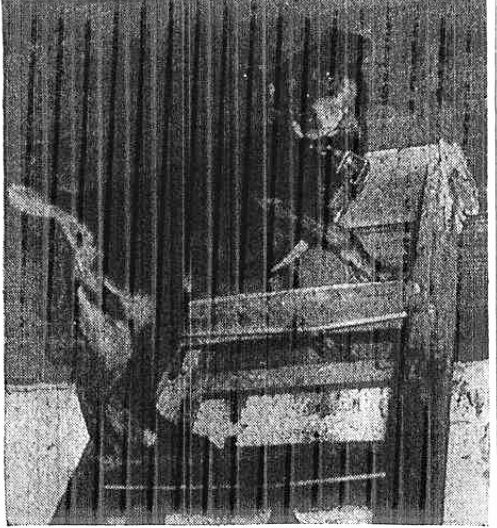
In 1936, Nip*, the veteran fire dog of Brooklyn’s Engine Company No. 203, won four medals of honor for heroism from the following agencies:
- New York Women’s League for Animals
- Dog’s World International
- American Society for the Prevention of Cruelty to Animals
- New York Anti-Vivisection Society
During his years of service with the engine company, Nip had demonstrated many acts of bravery and heroism. He rode with the company to every fire, and was always the first to leap off the fire engine and run into the burning buildings to scout for victims. Whenever he found a human in need of help, the brave fire dog would bark until the firemen responded.
I’m sure the fireman rewarded him with extra food or treats every time he saved someone, but Nip was never rewarded with medals for saving a human mother or child. He was awarded the medals for saving a cat. (And he didn’t even like cats.)
On November 10, 1936, a fire broke out in the basement of a four-story brick apartment building at 308 Hicks Street in Brooklyn Heights. It quickly spread to the upper floors through a dumb-waiter shaft.
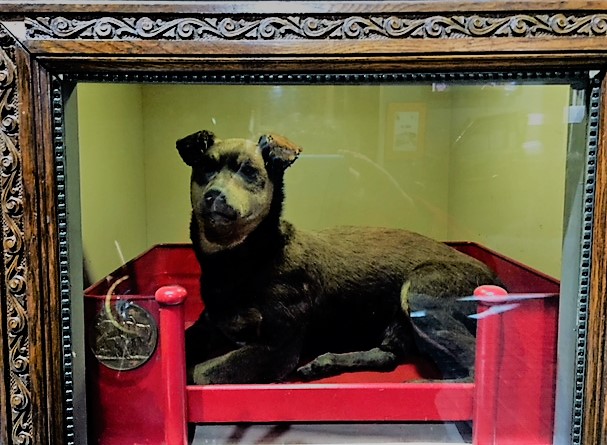

Ten people were in the building when Adela Gomez, 17, ran into the hallway on the second floor and screamed after smelling smoke. John Bermudez, 16, was with his mother, his 18-year-old sister Anna, his 12-year-old brother Joseph, and his sister-in-law and her baby in their top-floor apartment when they heard the commotion.
As the family started to descend the stairs, John noticed a cat running in the opposite direction toward the top floor. (Some reports say the cat was named Carlotta and belonged to John; other reports say the cat was named Fluffy and belonged to Mrs. Andrea Gomez on the second floor). John was determined to run after the cat and save it.
John’s mother protested, but the “invincible” teenager darted upstairs as his family made their way safely to the street.
When the firemen of Engine Company No. 203 arrived on the scene, they found John unconscious on the stairway between the third and fourth floors. They took him to the street, where a rescue squad tried to revive him for nearly an hour without success (I’m not sure why they didn’t transport him to a hospital).
Soon after the firemen brought John out of the building, Nip emerged from the building a little bit singed with the cat in his jaws. The cat had lost a few of its nine lives, but somehow it was revived.
The rescue at 308 Hicks Street wasn’t the first time the company’s fire dog had saved a cat. Only a few months before, he had put his disdain for felines aside to do his duty and rescue a litter of five kittens from a burning store at Hicks and Union Streets.
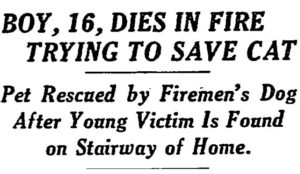
Nip’s Life as a Fire Dog
Taken in as a stray one winter night in 1929, Nip served 10 years with Engine Company No. 203. During that time, he received numerous injuries from broken glass and falling debris, burns from scalding water, and bruises from falling off the fire engine. He also had some wonderful times, especially during the summer months when he got to live with one of the firemen in his home on Long Island.
Nip could recognize all the bells and signals, and he knew exactly which signal meant his company was responding to a call (he never made a mistake). On the fire scenes, Nip would superintend the firefighters and alert them if he knew something was wrong. If the hoses ever splashed his way, Nip would nestle under a fireman’s coat.
Nip Answers His Last Call
Although Nip was a 16-year-old senior citizen in 1939, he probably had a few more good years left as an active fire dog when his life was abruptly ended on November 9, 1939. While playing out in front of the firehouse, Nip was struck by a hit-and-run driver.
People in the street called out for help, and a group of children followed the fire dog into the firehouse and told Lt. Matthew F. Rogers that it had been hit by a car that kept going. Instead of waiting for help to come, Nip dragged himself back inside and tried to jump up on the fire engine seat. Missing the seat, he landed on the running board, where he curled up and died.
In commemoration of Nip’s many acts of bravery and heroism, the members of Engine Company No. 203 hired a taxidermist to mount their treasured fire dog mascot. They kept him in a place of honor at the firehouse until the company disbanded in 1974.
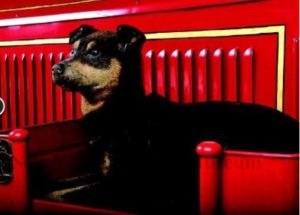
A Brief History of the Brooklyn Fire Department and
Engine Company No. 203
The earliest recorded history of the Brooklyn Fire Department goes back to 1772, when, on April 7 of that year, a meeting was held to choose six firemen in accordance with an act passed in 1768 “for the more effectual extinguishment of fires near the ferry in the township of Breuckelen, in Kings County.”
The men chosen were Joseph Sharpe, John Crawley, Matthew Cleaves, Joseph Pryor, John Middagh, and William Boerum.
In 1785, there was a meeting of villagers at the house and inn of the widow Margaret Moser on Fulton Street. There, a volunteer fire department was formed, consisting of seven freeholders, who voted to purchase a fire engine manufactured in New York City by Jacob Roome. It would be one of the first fire engines, if not the very first, made in the United States (up to this time, they were all imported from England).
The first fire company established at this time was Washington Company No. 1, which was housed on Front Street, near Fulton Street.
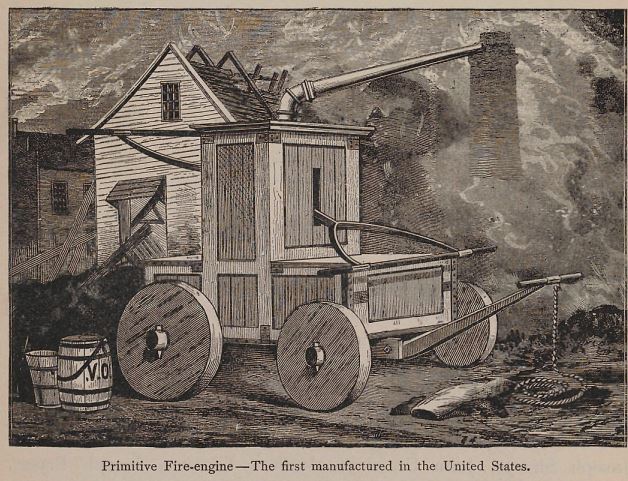
In 1797, a second engine was purchased, which was designated as Neptune No. 2. This company was formally organized under Chief John Doughty in 1817, when the department was enlarged following the act incorporating the Village of Brooklyn in 1816. Neptune No. 2, aka the Little Roosters, made its home in a former stable on Hicks Street, near Atlantic Avenue.
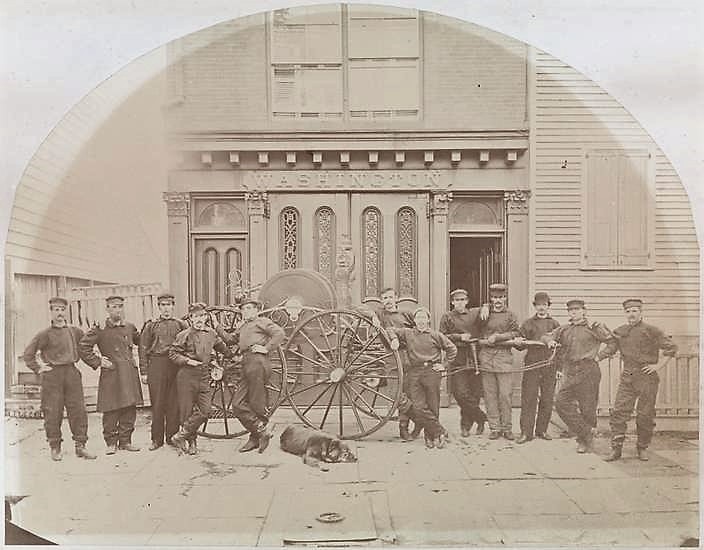
In 1855, the Brooklyn Common Council disbanded Neptune No. 2 for various discipline reasons. Nine years later, Neptune No. 2 reorganized at a new house on Hicks Street near Degraw street. That house proved to be too small, so the City of Brooklyn set out to find the men a new home.
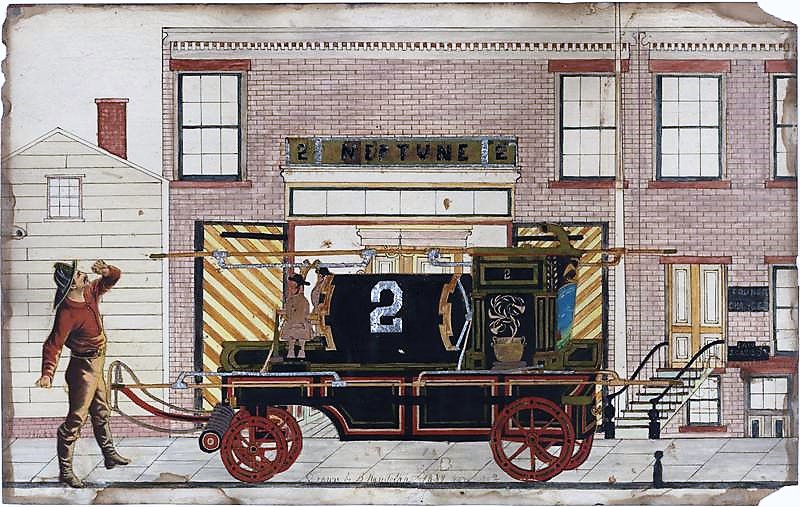
On April 29, 1864, the city purchased a three-story brownstone at 533 Hicks Street from William Buchanan and his wife, Mary, and David Lyall and his wife, Isabella, for $2000. The men embellished their new home with a figure of a rooster and the words “Neptune No. 2” carved in stone over the door.
When the Department of Fire of the City of Brooklyn was organized in 1869, plans were put in place for a full paid department of 13 engines and 6 ladder companies to replace the Eastern & Western District volunteers. On September 15, 1869, the newly organized Engine Company No. 3 moved into the firehouse previously occupied by the volunteers of Neptune No. 2 on Hicks Street.
The company covered one of the largest and most important districts in the city, and was bounded by Joralemon Street to the north, Third Avenue and 21st Street to the east, the Gowanus Bay to the south, and the East River to the west.
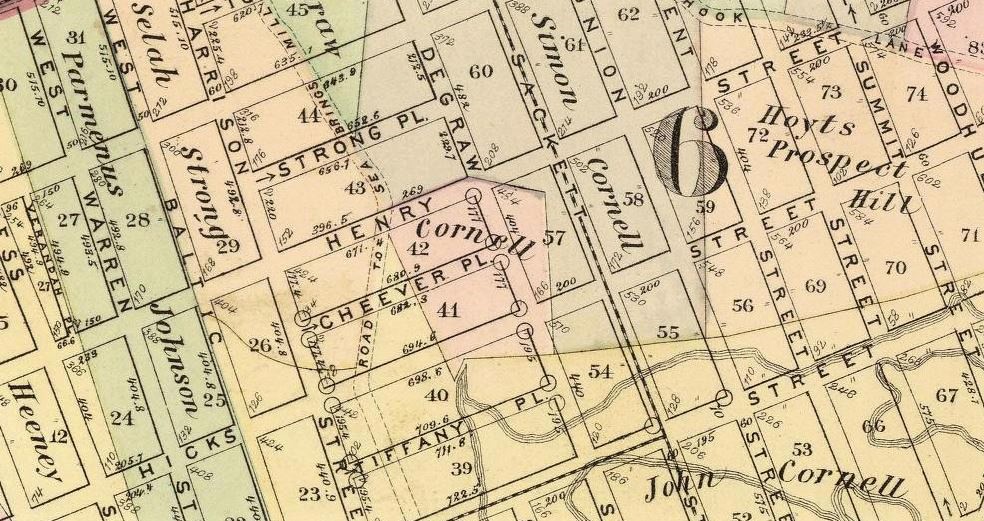
In the 1890s, the firehouse of Engine Company No. 3 was regarded as “commodious” and one of the finest houses occupied by the fire department. The apparatus and horses were on the ground floor, sleeping apartments for the men were on the second floor, and the third floor was fitted as a gymnasium.
Engine Company No. 3 had three of the largest horses in the department: Paddy was a handsome, iron gray horse used on the hose cart; Sam was a glossy black horse who pulled the engine; and Pete, a gray horse, was paired with Sam on the engine. Chief Thomas J. Nevins’ horse, Jim, described as a beautiful chestnut sorrel, also occupied a stall at this firehouse.
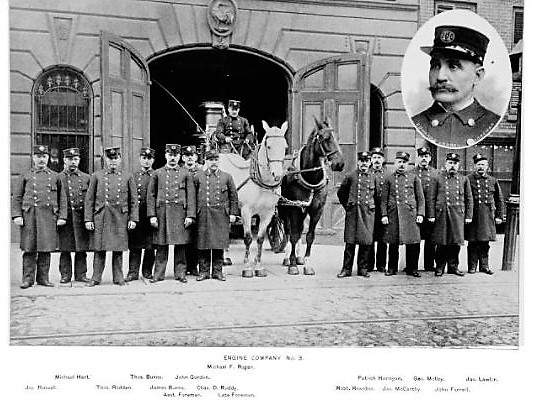
Engine Company No. 3 also had several pedigree fire dogs, “whose superior intelligence” earned them an honorable mention in the book, Our Firemen: The Official History of the Brooklyn Department (1892). Bob, a thorough-bred Gordon setter, was owned by Chief Nevins, and Frank and Nell, both English coach dogs, were the pets of two other firemen. Nell was noted for being a great jumper and hand-ball player. She could easily bring down a piece of sugar from the top of an eight-foot fence and catch a ball in her mouth as well as a child could catch one in his hands.
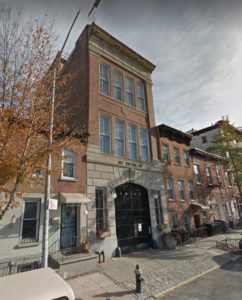
In 1898, Engine Company No. 3 became Engine Company No. 103 under the Fire Department of New York (FDNY). The company temporarily relocated to 274 Hicks Street in 1912 while their headquarters at 533 Hicks Street were renovated to accommodate the new motorized vehicles.
On January 1, 1913, the company was renamed once again. The men of Engine Company No. 203 moved into their new home on October 7, 1913. Shortly thereafter, they took possession of Brooklyn’s very first motorized vehicle, a high-powered hose wagon that could go 40 mph (orders were issued prohibiting the vehicle to go more than 25 mph).
In December 1974, Engine Company No. 203 was one of eight fire companies of the FDNY disbanded as a cost-cutting measure. On December 16, the 23 firemen and four officers assigned to 203 were reassigned and scattered among a number of different companies.
As Capt. Angelo Insardi told a reporter from The New York Times, “We were old Brooklyn Engine Three, then One‐Oh‐Three, then Two‐Oh‐Three and now we’ll be Oh‐Oh‐Oh.”
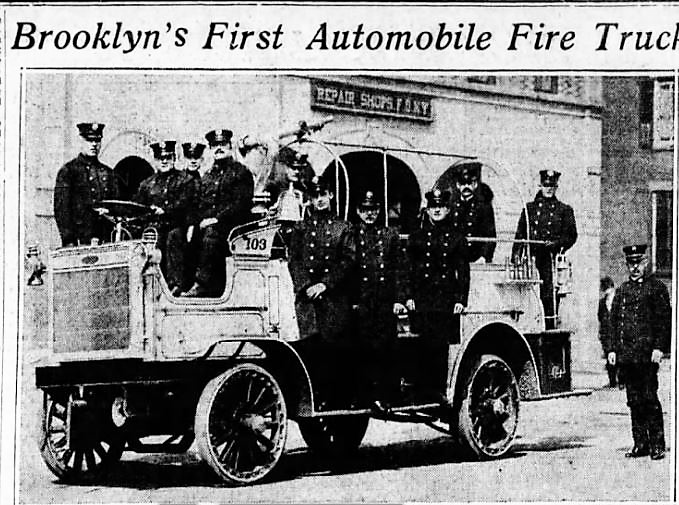
*Nip is not his real name. Most news articles refer to the dog as “Nigger” or “Nig”, one article called him “Nipper”, and he’s called “Chief” at the fire museum.
